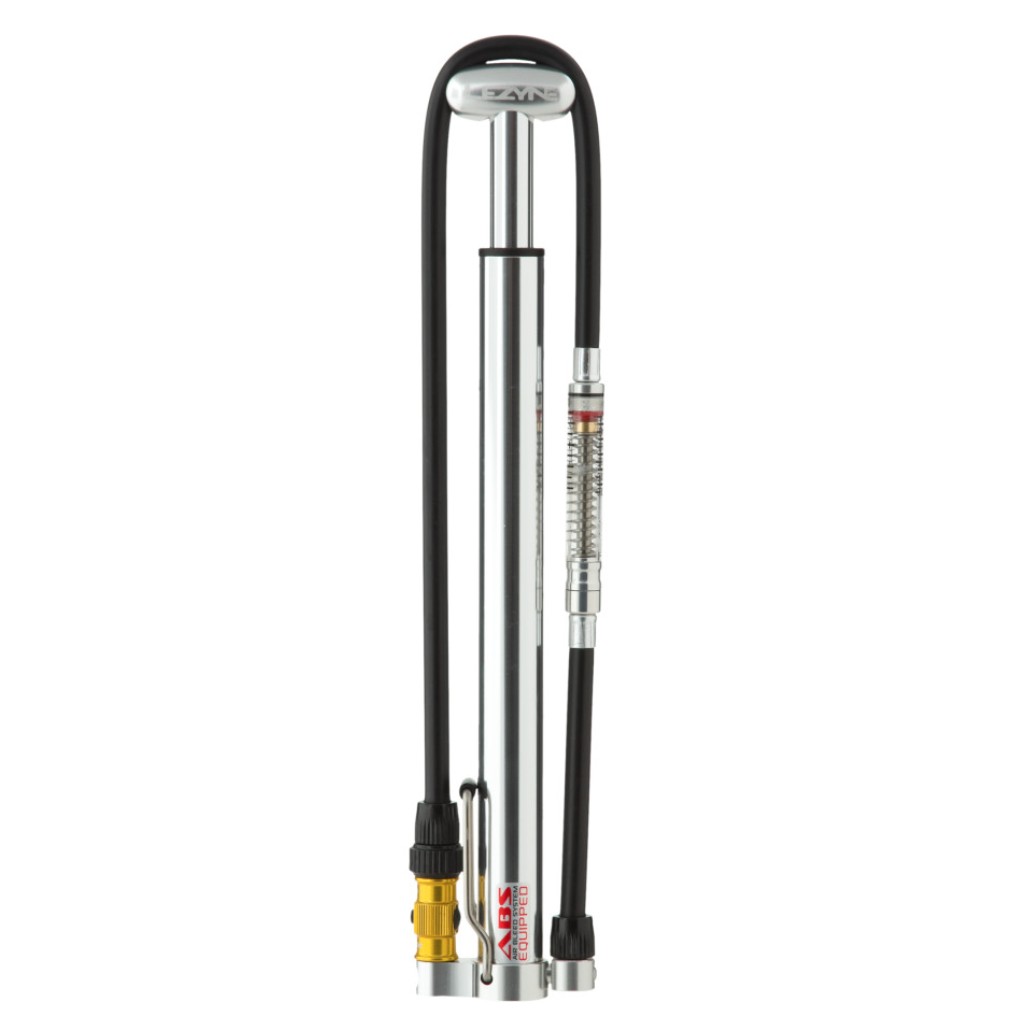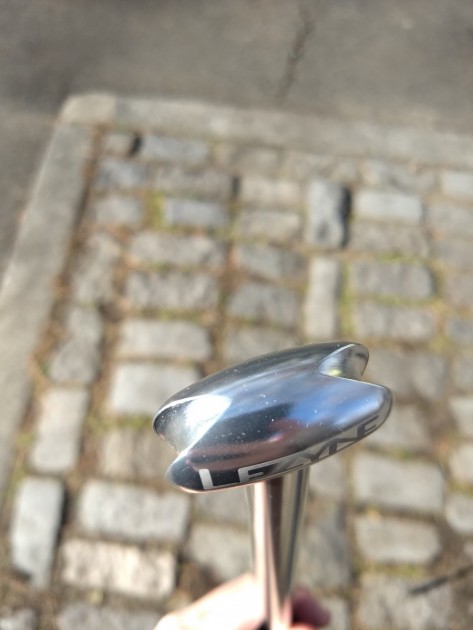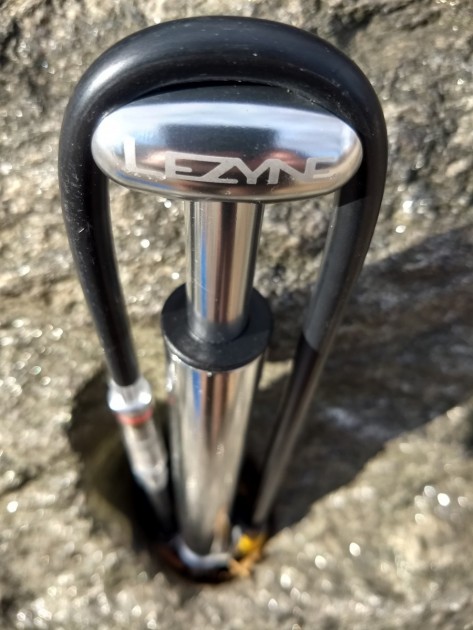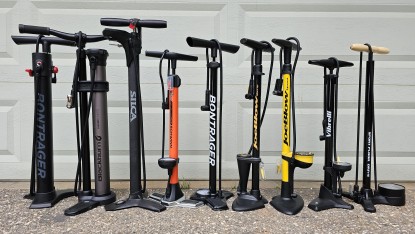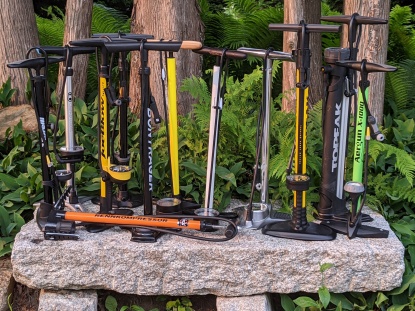Lezyne Micro Floor Drive HV Review
Our Verdict
Our Analysis and Test Results
Lezyne's Micro Floor Drive High Volume pump may seem like an odd inclusion in our floor pump review, as its size is closer to a portable frame pump. However, it's larger than most frame pumps, operates just like a miniature floor pump, and is called “Floor Drive”. Plus, we all know cyclists who only own a miniature pump and use it exclusively. So we decided to put the Micro Floor Drive through the wringer with its larger competitors. It may have been unfair of us to do so, and ultimately the Micro Floor Drive cannot measure up to a full-size floor pump in any way, save for portability.
Stability
With its circular base just over 1 inch in diameter, the Micro Floor Drive has virtually no free-standing stability to speak of. We struggled to capture any outdoor photos of it standing on its own before a light breeze would knock it over. The whole pump is extremely lightweight, only about half a pound, which is great for portability but not terribly helpful for stability's sake.
There isn't much improvement in this area when using the pump. A small two-inch stainless steel wire foot folds down so there is something to stand on, but it's barely enough to make a difference and the pump moves wildly from side to side when any significant force is applied to the handle.
Ease of Attachment/Detachment
The pump head uses a similar but more compact design to the head found on its big sister, the Steel Floor Drive; a flip-thread chuck with an air bleed button built into the side. The chuck can be unscrewed to flip around and accommodate either Presta or Schrader valves, and it screws down onto either valve for a secure connection. We like this design a lot, except for one major flaw with the miniaturized version--the air bleed button has been placed right on the side of the chuck, in the middle of the area one grips to attach and detach it from their valve. It becomes much more difficult to go through this motion without bumping the bleed button repeatedly and losing little bursts of air.
The air hose is a modest 24 inches, shorter than any full-size pump we tested, but only four inches shorter than the Schwinn model. Not bad considering the pump is half the height of the smallest full-size models.
Gauge
The gauge is an interesting and unique design, built right into the air hose of the Micro Floor Drive, and its markings go as high as 120 PSI even though the pump is only rated for 90. The gauge placement is clever for saving space, but it suffers from a couple of major design flaws.
From the perspective of a pump operator, with the hose pointing away, the gauge readings are upside-down. To look at this gauge properly would be to have one's face pressed against their bike wheel.The numbers are so small, and the red indicator line is so broad, that one can only ascertain their tire pressure to within about 15 PSI.
Whether this gauge reads 55 PSI, 70, or somewhere in between is anybody's guess, but it's imprecise enough (especially upside-down) to make it essentially pointless; our more experienced testers mostly resorted to the old fashioned thumb and forefinger tire squeeze to get a ballpark idea.
Inflation Speed
Despite being marketed as a “high volume pump” (relative to its size), the inflation speed of the Micro Floor Drive is extremely slow, three to four times slower than the full-size competition, with decreasing effectiveness at higher pressures. Our testers had extreme physical difficulty pumping up tires past 60 or 70 PSI, although the pump is rated for 90 and the gauge goes to 120.
Making this experience more challenging is the pump's handle, less than 2 inches wide, metal, with sharp corners on the edges that really dig into the palm of the hand when pushing down hard to try to achieve higher pressures.
Accuracy
Accuracy with the Micro Floor Drive's gauge is unlikely since the reading is difficult to discern with any precision. In our tests, we found that our best guess at the gauge's readings generally differed from our independent gauge by around 5-10 PSI…whether that is the result of an inaccurate gauge or just an unreadable one is not known, and perhaps not important.
Best Applications
Of the pumps we tested here, the Lezyne Micro Floor Drive is by far the most portable. But frankly there are smaller and better frame pumps available for maximum portability; check out our frame pump review for compact options, including two of Lezyne's other models that performed much better (in a different set of tests more suited to their strengths, in fairness).
Value
More expensive than any other floor pump reviewed here and with several problems, we don't find this pump to be a particularly good value. Lezyne's excellent Steel Floor Drive pump costs less and performed better in all of our tests; there are also portable frame pumps that cost half as much.
Conclusion
Whether it was fair for us to compare this miniature floor pump directly to a batch of full-size floor pumps is debatable, but in any case the results clearly show that the Micro Floor Drive is not a suitable substitute for a quality full-size floor pump; we didn't find it to be a particularly suitable travel pump either, but that's a story for another review.


